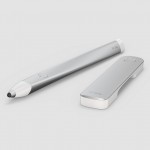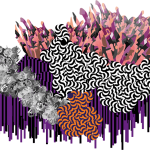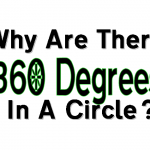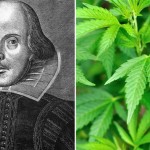LONDON — Is digital art the next big thing in the contemporary art world?
At the moment, the market for art that’s created and displayed on a screen — as distinct from paintings, prints and photos that are generated digitally and then printed — is small. Phillips’s inaugural “Paddles ON!” sale of 20 digital and digitally-related works in New York last October, held in association with the image-posting site Tumblr, was the first such event to be held at an international auction house. It raised just $90,600 — enough to buy a few square inches of a Christopher Wool painting. The top price of $16,000 went for “Asymmetric Love Number 2,” a chandelier made out of CCTV cameras, by the American “anti-disciplinarian” artist Addie Wagenknecht.
Encouraged by high attendance and a selling rate of 80 percent per lot, Phillips and Tumblr will hold a second digital art sale, this time in London. The event, scheduled to run June 21 to July 3, will combine an online auction via the Paddle8 marketplace with a live sale at Phillips. It’s estimated to raise at least 53,600 pounds, or about $90,000, from 23 works, all by different artists working in a dizzying range of media, few of whom are known to mainstream contemporary art buyers.
Those featured include the Amsterdam-based artist Jonas Lund, who creates, among other things, digital abstracts; the more widely exhibited American artist Sara Ludy, who makes quietly unsettling digital photomontages; and Hannah Perry of Britain, who has been shown at the Saatchi Gallery and makes sight and sound installations incorporating flat-screen video monitors. The examples of their work and that of the other artists included in the sale are generally estimated at less than £5,000.
“We feel there’s been a disconnect between the art world and the tech world,” said Megan Newcome, Phillips’s director of digital strategy. “Younger collectors don’t find these works intimidating. They relate to them on a generational level. The market is still nascent, but this is a direction contemporary art is going in.”
Digital art, in its purest forms, is a complex, fast-changing, fuzzily bordered world that traces its origins back to Andy Warhol’s recently rediscovered images made on his Commodore Amiga home computer in the mid-1980s and other, less-famous artists who preceded him. Unlike the computer-generated paintings of fashionable artists like Mr. Wool and Wade Guyton, which now fetch millions at auction, digital art has been difficult to sell when it hasn’t been transferred to a more traditional medium. Tellingly, many of the digital images in Phillips’s auction have been printed on paper or aluminum.
There are plenty of people who remain skeptical about the commercial potential of art shown on a screen in a world of free downloading. “To have a proper market, you need works that are securely limited, signed and numbered,” said the London-based dealer David Juda, who is currently showing “The Arrival of Spring,” a series of Yorkshire landscapes David Hockney drew on an iPad in 2011 that have been downloaded and transferred to paper and aluminum. Mr. Juda has sold 80 of the smaller-size prints on paper, limited to an edition of 25, priced at $28,000 each.
The price of most digital works might not yet have reached that level, but certificates of authenticity are making a new group of international collectors more confident about five-figure purchases. This week, the Brooklyn digital artist Tabor Robak will be showing “A*,” a computer game-inspired video installation running across 14 conjoined monitors, in a group show at the Swiss Institute of Contemporary Art in New York. Typical of the way digital pieces blur the boundaries between static and video art, the piece is being sold in an edition of three for $15,000 each for the data and the all-important certificate. Hardware isn’t included.
Mr. Robak is represented by Team Gallery in New York, who also represent Cory Arcangel, 36, the multimedia artist who was instrumental in retrieving Warhol’s computer drawings from oblivion. Mr. Arcangel, the subject of a one-man show at the Whitney Museum of American Art in 2011, is best known for manipulating video games and has become one of digital art’s stand-out names, though he doesn’t feature in Phillips’s sale in London.
In 2003, Team Gallery exhibited “Super Mario Clouds,” a wall projection made from an altered video game chip, which sold for $3,000. This same work recently sold privately for $200,000, according to José Freire, Team Gallery’s owner.
“Something has to take the concept of the avant-garde forward,” Mr. Freire said. “How can you address the contemporary without addressing the digital?”
One of the reasons contemporary artists are attracted to digital practice is because of its democratic ethos. But how can the Internet’s ideal of almost limitless access be reconciled with the art market’s craving for exclusivity, which underpins its increasingly bloated price structures?
“It’s a conversation a lot of artists are having at the moment,” said the Paris-based American digital artist Evan Roth, whose unique 2014 digital print, “NEXT, NEXT, NEXT,” recording the shadows of three finger-swipes on an iPhone, will be included in Phillips’s sale in London, estimated at £3,000 to £4,000.
“Digital media should be free and copied. That’s its natural state. It’s like water flowing,” Mr. Roth said. “We’re all part of the digital revolution. It’s happening so fast, and there is a new group of informed collectors who are beginning to understand the work in an intimate way.”
Mr. Roth said his work had been bought by the Paris-based musician and collector Hampus Lindwall. The artist identified Jonah Peretti, The Huffington Post co-founder and BuzzFeed founder; the Washington lawyer Alex C. Lakatos; as well as the media company Bonnier Group of Sweden, among other collectors of digital art, most of which can be snapped up for less than $10,000.
“Digital media appeals to younger artists as a more democratic space that isn’t tied up with a system of financial value,” said Fabienne Nicholas, curator of the collection of the international insurance company Aspen, which is using digital art to enliven its corporate image. Last month the company awarded its inaugural Online Art Award, held in association with the London-based Contemporary Art Society, to Yi-Chun Lin, a student at the London College of Communication.
“The market has become so pervasive and a lot of artists want to circumvent it,” Ms. Nicholas said.
As the market for “fine” contemporary art becomes more and more expensive, it will be interesting to see if the sheer affordability and accessibility of digital art begins to subvert it.









